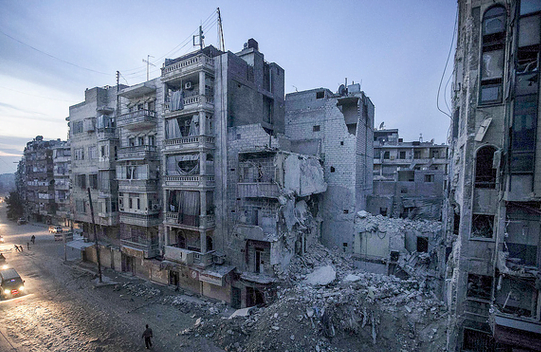The UN Human Rights Council’s Commission of Inquiry on Syria released its latest report on the rapidly deteriorating human rights situation in Syria. This is a group tasked with compiling neutral information about the plight of civilians caught in the conflict and whether or not the laws of war are being respected. The Commission is lead by a Brazilian lawyer and has not been able to visit Syria because the government refuses to grant them visas.
Nonetheless, they have compiled through various sources an authoritative report on human rights violations in Syria in the first 4 months of 2013. Their findings are horrific.
1) 17 Massacres. The commission identifies 17 incidents which meet its definition of “massacre.” Each are presented in detail. Here’s one:
On 10 April, a Bedouin family staying on a roadside near an Alawite village was attacked and killed. The mother, father and seven children, all under 18, and the grandmother were murdered in their tents. Locals who filmed the scene blamed Government-affiliated militia, while distant family members appeared on television blaming “terrorist gangs.”
2) Children are Combatants. A child mutilates an enemies’ corpse.
Video footage emerged showing a child participating in the beheading of two kidnapped men. Following investigation, it is believed that the video is authentic and the men were soldiers, killed as depicted. It was not possible to identify the perpetrators. Evidence indicates the Usud Al-Tawhid Brigade committed the initial kidnapping.
3) Sexual Violence. This has been a persistent, yet underreported feature of the Syrian civil war. The report documents incidents of sexual violence committed by government and rebel forces alike.
When committed by pro-Government forces, sexual violence occurred during house searches, at checkpoints and in detention centres, often as part of interrogations by intelligence services. One woman detained in Latakia, described how she was threatened with gang rape during her interrogation. She also described other detainees being stripped naked while subjected to electric shocks. In Branch 285, the rape and sexual abuse of male detainees by their interrogators was reported. There were no indications of action taken by senior commanders to investigate, prevent or punish acts of sexual violence.
4) More Crimes Against Children. Kids are targeted to get to their parents.
Government forces and militia detained children at checkpoints and during house raids. Several arrests in Dara’a appeared to target children of suspected FSA members. Others held children as hostage in exchange for detainees held by the FSA. During the 10 April attack on Sanamayn, children were forced to watch the torture or killing of parents. In April, checkpoint personnel in Rastan, Homs, threatened to shoot two girls aged nine and seven who started crying during their father’s interrogation.
5) Nowhere to run. Forced displacement is a key strategy of the government. Entire towns have been uprooted, but there are a dwindling number of safe places to find sanctuary. An estimated two million people displaced inside Syria. Many have stories like this:
In March and April, internally displaced civilians – predominantly from Homs governorate – sought refuge in Deir Atiyah, a town in northern Damascus. Between 19 and 23 April, Government forces shelled Deir Atiyah and sent a message to the town’s authorities that the internally displaced were to be forced to leave the town. Failure to do this would result in the town’s being attacked. In late April, the municipal office of Deir Atiyah informed the displaced that they had four days to leave before their quota of bread was withdrawn. Shortly thereafter, there was an exodus of internally displaced persons, many from Homs city and Al-Qusayr, from Deir Atiyah.
These are all just incidents that occurred between January 15 and May 15. All this horrifying abuse in just a few long months.
